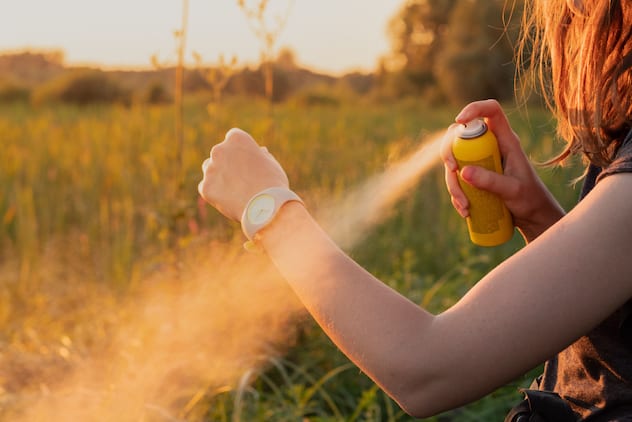January 2019 was the hottest month on record for Australia, and the temperature continues to swelter through February. The hot temperature and high humidity provide fabulous breeding grounds for summer bugs that love to bite. Here’s what to look out for and how to treat various bug bites.
Thankfully of all the thousands of bugs found in Australia, only three have bites which are capable of causing death – the funnel-web spider, the red back spider and the paralysis tick.
Ticks
Ticks thrive in warm, wet conditions and are a hazard to both people and pets in the summer months. The most important tick in Australia is the Paralysis Tick, Ixodes holocyclus, and according to the Australian Government Department of Health over 95% of tick bites in Eastern Australia are due to this species and most tick-borne illnesses are due to this species.
This tick can be fatal to dogs, however all ticks can cause human health problems like rashes, allergies and Lyme’s disease. Recently a new syndrome known as “tick-induced mammalian meat allergy” has been described, whereby people bitten by the Paralysis Tick, which is found in coastal Eastern Australia, can subsequently develop an anaphylactic reaction to consuming meats and animal by-products such as gelatine.
Ticks are parasites that feed on animal and human blood. Ticks are most active during periods of high humidity, especially after rain, and this is when you should take particular care to avoid tick bites. If you suffer from allergic reactions to ticks, and find a tick on your skin only attempt to remove a tick whilst at a medical facility such as an Emergency Department.
In non-allergic individuals you can remove a tick with fine tipped forceps (not household tweezers unless fine tipped forceps are not available), grasp the tick as close to the skin’s surface as possible. Pull upwards with steady pressure and avoid jerking or twisting the tick. The Australasian Society of Clinical Immunology and Allergy has recently recommended killing an adult tick in place by using an ether-containing spray to kill the tick by freezing it. These products are normally used for the treatment of warts and skin tags and are readily available from chemists.
Fleas
Fleas also thrive in hot, humid environments. Outbreaks of fleas often happen after a heatwave as the warm weather makes them mature much faster, and the humidity helps protect them from drying out. Some flea bites do carry infectious diseases, and some aggravated bites need to be treated. If you do find a flea on your pet, chances are you have a whole lot more living in dark places like underneath furniture and in the carpet. Flea bites differ from mosquito bites in that they remain small red bumps and often have a red ‘halo’ around the bite centre. Bite groups also usually occur in groups or in a straight line, and are often found on your legs or ankles.
Mosquitoes
Mosquitoes love hot and humid conditions, and their favourite breeding ground is still water, whether that’s a clogged gutter, pool, pond or storm drain. It’s the female mosquito that bites humans, and she can live for a few months. Most of the time mosquito bites are mild and go away after a few days, however some people can experience and allergic reaction. Mosquitos can also carry viruses, bacteria and parasites and can transmit them when they bite you. Mosquito bites are usually sporadic over the body.
Midges
Biting midges are small flies that come out to bite at dawn and dusk in coastal areas. A midge bite is usually a small, inflamed bite. Despite the size, the bites can cause acute discomfort, irritation and severe local reactions. An ice pack or wet cloth can provide some relief. Itching may commence immediately after the bite, but usually begins some hours later. Most individuals are unaware they are being bitten at the time. Midges are not known to spread disease.
Bedbugs
Bedbugs are small parasitic insects that feed on human blood. They are more a nuisance pest than a health threat. Bedbugs can live up to six months at room temperature and can survive for long periods without a blood meal and are commonly found on mattresses, bed frames, beside tables, skirting boards and carpet edges. One in five people bitten by a bed bug may not experience a reaction and the bite may not be noticed for up to 9 days. Skin reactions can include redness, swelling, itching and burning sensation. Typically a bed bug bite is red, swollen and has a dark red centre. Bites are usually in a line or grouped together.
Bull ant
A bull ant bite is loaded with venom containing protein and histamines that can cause an unpleasant reaction. Bull ants can sting through clothing and they can become very aggressive once disturbed. The bull ant, and the jack jumper ant, have been listed by the Australian Institute of Health and Welfare (AIHW) as the most common species of ant likely to require hospital care. Depending on the individual’s reaction to a bite, treatment varies from washing the area and applying ice, to calling triple zero and using an autoinjector.







